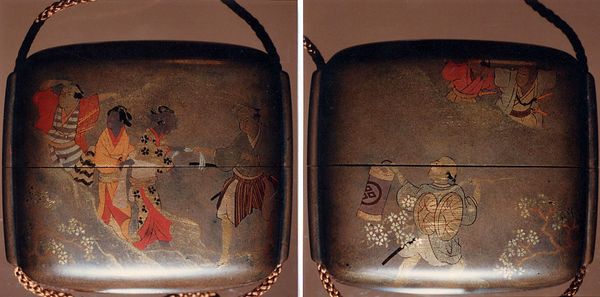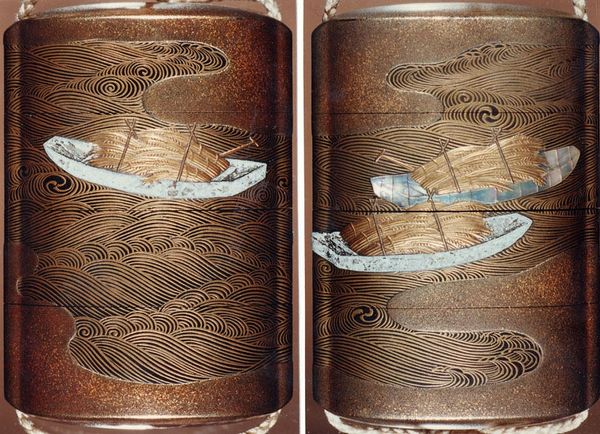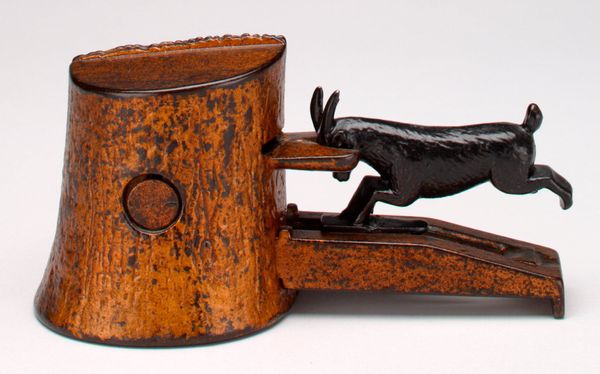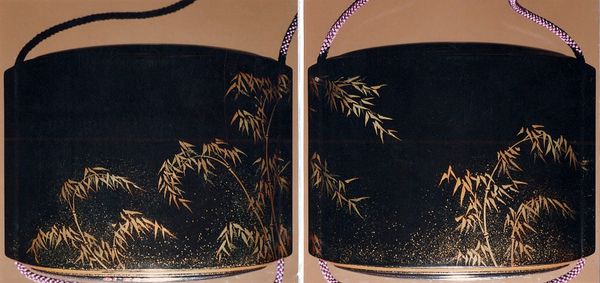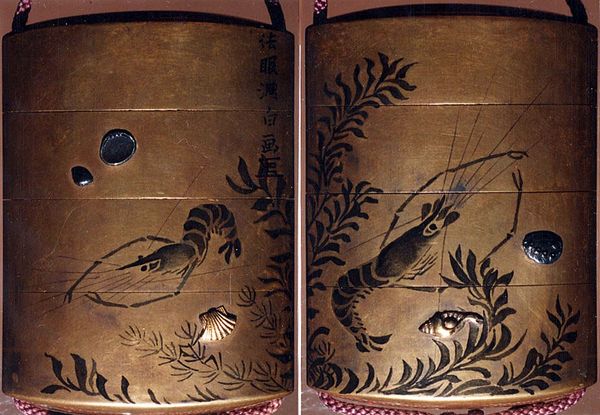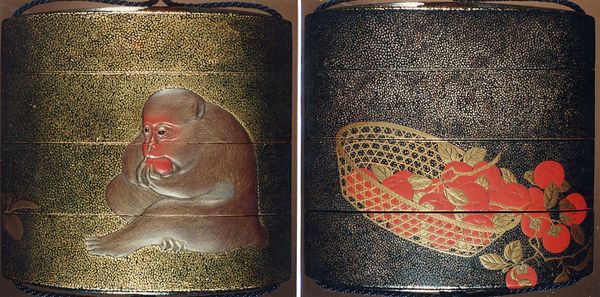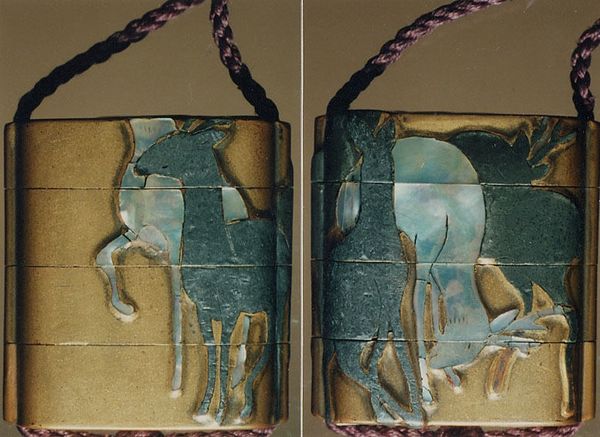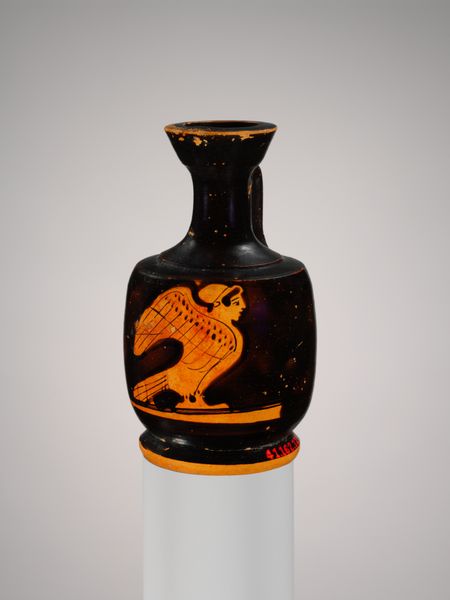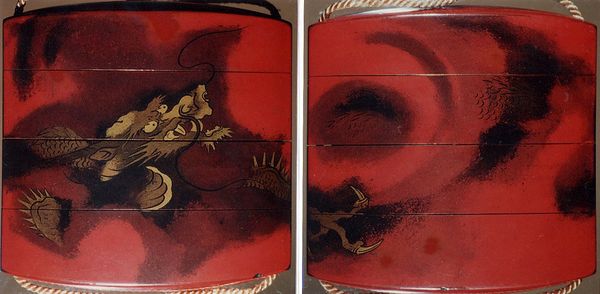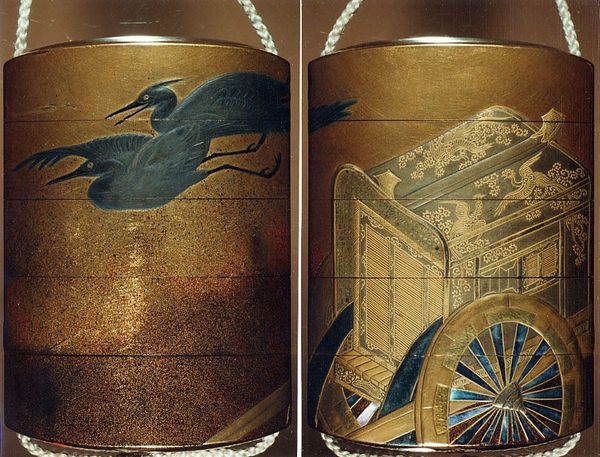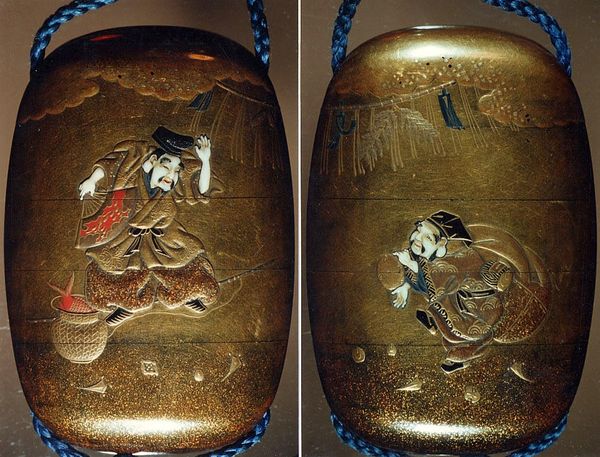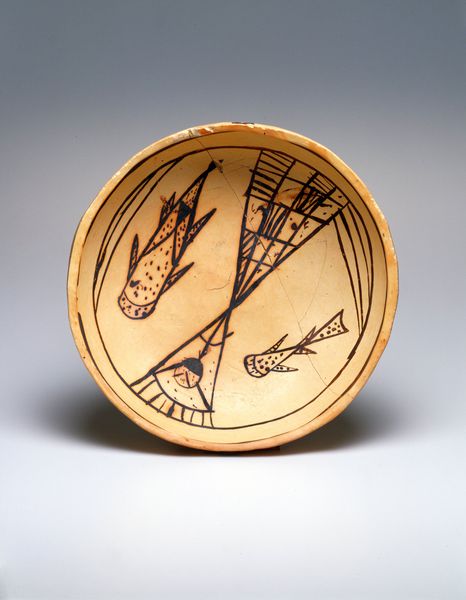
Case (Inrō) with Design of Horse and Autumn Grasses 19th century
0:00
0:00
ceramic, earthenware, wood
#
asian-art
#
ceramic
#
earthenware
#
horse
#
ceramic
#
wood
#
earthenware
#
decorative-art
#
decorative art
Dimensions: 2 1/4 x 2 5/8 x 1 5/8 in. (5.7 x 6.7 x 4.2 cm)
Copyright: Public Domain
This is a case, or inrō, with a design of a horse and autumn grasses, made by Shibata Zeshin in Japan in the nineteenth century. The inrō is made of lacquered wood. Lacquerware was historically associated with wealth, ritual, and display. In the Edo period in Japan, sumptuary laws regulated the materials and patterns people could wear depending on their social class. These laws were then overturned by the Meiji Restoration in 1868. Lacquerware became more common in the Meiji period as they didn’t carry the same social significance as before. The horse and autumn grasses depicted here are traditional Japanese motifs in art. The horse was associated with the samurai class. The grasses symbolize the season. By studying trade records, museum collections, and social histories, we can understand the changing social status of things like lacquerware and the art market in nineteenth-century Japan.
Comments
No comments
Be the first to comment and join the conversation on the ultimate creative platform.
